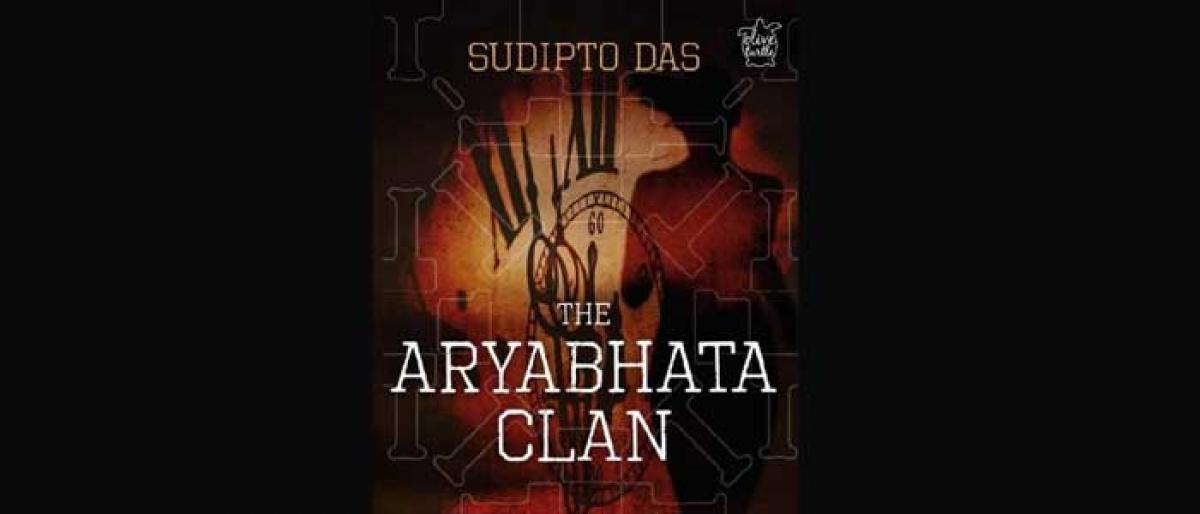Live
- DEO suspends teacher accused of sexual assault
- PM ‘cursing’ Congress out of despair: Maharashtra Cong Chief
- Applications are invited for Junior Colleges Scheme District Scheduled Castes Development Officer Ramlal
- A nomination was filed on the second day for the Nagar Kurnool parliamentary seat
- SP Gaikwad inspected the Telangana Amarnath Saleswaram Jatara yatra arrangements
- Rahul Gandhi's decision to contest from Wayanad shows 'lack of confidence': BJP President Nadda
- IPL 2024: Delhi bowlers will go after all of SRH’s top-order batters, says head coach Ricky Ponting
- At Amroha rally, PM Modi sends out ‘meaningful’ message for Muslims and Hindus
- Tripura records highest 79.83 pc voter turnout in Northeast
- The government has to clear the confusion
Just In

Sudipto Das follows up his debut novel ‘The Ekkos Clan’ with ‘The Aryabhata Clan’, a novel set in the same world a few years down the line. The lead of his second novel is also Kubha, albeit the great-granddaughter of Kubha from the first novel.
Sudipto Das follows up his debut novel ‘The Ekkos Clan’ with ‘The Aryabhata Clan’, a novel set in the same world a few years down the line. The lead of his second novel is also Kubha, albeit the great-granddaughter of Kubha from the first novel.
The tales are set in a time period which is very similar to ours but with conspiratorial and complicated mysteries sprinkled into the ancestry of the main characters that have profound implications in shaping the history of mankind. The author rehashes his ability to spin extravagant twisted plots that originate in the infancy of civilisation with a winding path to an explosive resolution in the modern day.
Through young Kubha and the current cruelty she is forced to face, we are exposed to the maternal side of the family i.e. Afsar’s ancestry. The paternal grand secrets were revealed in the first novel when Kratu and Afsar set out to investigate the origins of grandma Kubha’s bedtime stories. As is the modus operandi for any series protagonists, the Kubha family is in the centre of all things, big and small.
They are pivotal in discovering the sub-continent’s lost heritage. Readers familiar with the author’s previous novel will meet some old faces and notice various references to the first adventure pop up in the narrative. The additional titbits enrich the world and its characters making it all even more endearing.
ISIS and a secretive right-wing Hindu group want to destroy the Taj Mahal to trigger a systematic disruption of the nation. And the tool to precipitate that is the corruption of old truths revealed by deciphering the motifs on Peshawar carpets.
The central crisis that needs to be averted in the present is far more intricate than the historic riddle that needs to be resolved. The forgotten past is simple and the truth it reveals simple but is made into a convoluted mess due to the perceptions and motivations of opposing parties trying to mould a suitable foundation to build on.
Relationships that connect to Khuba beyond blood relatives are crafted with a purpose and shed a light on her various facets. Parush, is Khuba’s unconventional partner and a master at the spy and intelligence game. Story pieces from Parush’s perspective are fast paced and run like a proper thriller.
Kruta and Afsar take a back seat and their scenes are mostly used to set up the background and fill gaps in the sequence of events that transpire. The tale takes a while to find its footing but the immediate hook in the first chapter will hold the reader’s attention long enough till the whole thing gets to high gear.
I rate the book a 4 out of 5 for its grounded characterisations and thoroughly researched contexts. Hinduism, Islam, nationalism, identity politics and fanaticism are prominent themes of the tale. The use of linguistics, archaeology, mathematics, history, palaeography and epigraphy makes it a rather heavy read not suited for the uninterested.
The narrative is particularly contemporary to the national discourse and is bound be engaging to anyone with an interest in Politics, Mystery, History and Linguistics. The explanations tend to run long and demand a lot of attention.
The author slips into research journal depths of analysis that isn’t necessarily suited for the general consumption. This adds to the authenticity of the characters struggle but is a burden that the reader may not find appealing.
By: Shirish Kumar

© 2024 Hyderabad Media House Limited/The Hans India. All rights reserved. Powered by hocalwire.com







